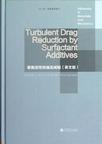表面活性剂湍流减阻
出版时间:2012-6 出版社:高等教育出版社 作者:杨凤臣 页数:257 字数:430000
内容概要
表面活性剂湍流减阻是流体动力学领域多年来的研究热点,这一现象同时与湍流、流变学、流体动力学等多个方面密切相关,而且对其进行应用推广需要化工、机械、市政等不同领域知识的有机结合。《表面活性剂湍流减阻(英文版)》正是在这一背景下,基于表面活性剂湍流减阻流动研究领域最新的实验、数值模拟和理论分析方面的研究成果,详细阐述有关表面活性剂湍流减阻流动的湍流特性、流变学物性、理论、特殊技术以及实际应用方面的问题。
《表面活性剂湍流减阻(英文版)》可供流体力学、工程热物理、化学工程、空调、制冷等相关专业研究生以及相关研究领域的科研人员参考使用。
书籍目录
Preface
1 Introduction
1.1 Background
1.2 Surfactant Solution
1.2.1 Anionic Surfactant
1.2.2 Cationic Surfactant
1.2.3 Nonionic Surfactant
1.2.4 Amphoteric Surfactant
1.2.5 Zwitterionic Surfactant
1.3 Mechanism and Theory of Drag Reduction by Surfactant
Additives
1.3.1 Explanations of the Turbulent DR Mechanism from the Viewpoint
of Microstructures
1.3.2 Explanations of the Turbulent DR Mechanism from the Viewpoint
of the Physics of Turbulence
1.4 Application Techniques of Drag Reduction by Surfactant
Additives
1.4.1 Heat Transfer Reduction of Surfactant Drag-reducing
Flow
1.4.2 Diameter Effect of Surfactant Drag-reducing Flow
1.4.3 Toxic Effect of Cationic Surfactant Solution
1.4.4 Chemical Stability of Surfactant Solution
1.4.5 Corrosion of Surfactant Solution
References
2 Drag Reduction and Heat Transfer Reduction Characteristics of
Drag-Reducing Surfactant Solution Flow
2.1 Fundamental Concepts of Turbulent Drag Reduction
2.2 Characteristics of Drag Reduction by Surfactant Additives and
Its Influencing Factors
2.2.1 Characteristics of Drag Reduction by Surfactant
Additives
2.2.2 Influencing Factors of Drag Reduction by Surfactant
Additives
2.3 The Diameter Effect of Surfactant Drag-reducing Flow and
Scale-up Methods
2.3.1 The Diameter Effect and Its Influence
2.3.2 Scale-up Methods
2.3.3 Evaluation of Different Scale-up Methods
2.4 Heat Transfer Characteristics of Drag-reducing Surfactant
Solution Flow and Its Enhancement Methods
2.4.1 Convective Heat Transfer Characteristics of Drag-reducing
Surfactant Solution Flow
2.4.2 Heat Transfer Enhancement Methods for Drag-reducing
Surfactant Solution Flows
References
3 Turbulence Structures in Drag-Reducing Surfactant Solution
Flow
3.1 Measurement Techniques for Turbulence Structures in
Drag-Reducing Flow
3.1.1 Laser Doppler Velocimetry
3.1.2 PIV
3.2 Statistical Characteristics of Velocity and Temperature Fields
in Drag-reducing Flow
3.2.1 Distribution of Averaged Quantities
3.2.2 Distribution of Fluctuation Intensities
3.2.3 Correlation Analyses of Fluctuating Quantities
3.2.4 Spectrum Analyses of Fluctuating Quantities
3.3 Characteristics of Turbulent Vortex Structures in Drag-reducing
Flow
3.3.1 Identification Method of Turbulent Vortex by Swirling
Strength
3.3.2 Distribution Characteristics of Turbulent Vortex in the x-y
Plane
3.3.3 Distribution Characteristics of Turbulent Vortex in the y-z
Plane
3.3.4 Distribution Characteristics of Turbulent Vortex in the x-z
Plane
3.4 Reynolds Shear Stress and Wall-Normal Turbulent Heat Flux
References
4 Numerical Simulation of Surfactant Drag Reduction
4.1 Direct Numerical Simulation of Drag-reducing Flow
4.1.1 A Mathematical Model of Drag-reducing Flow
4.1.2 The DNS Method of Drag-reducing Flow
4.2 RANS of Drag-reducing Flow
4.3 Governing Equation and DNS Method of Drag-reducing Flow
4.3.1 Governing Equation
4.3.2 Numerical Method
4.4 DNS Results and Discussion for Drag-reducing Flow and Heat
Transfer
4.4.1 The Overall Study on Surfactant Drag Reduction and Heat
Transfer by DNS
4.4.2 The Rheological Parameter Effect of DNS on Surfactant Drag
Reduction
4.4.3 DNS with the Bilayer Model of Flows with Newtonian and
Non-Newtonian Fluid Coexistence
4.5 Conclusion and Future Work
References
5 Microstructures and Rheological Properties of Surfactant
Solution
6 Application Techniques for Drag Reduction by Surfactant
Additives
Index
章节摘录
版权页: 插图: 1.3.2.4 Decoupling of Turbulent Fluctuations It has been indicated from many studies that the effect of drag reducer on turbulent flows also appears as the decreased correlation between the axial and radial fluctua-tions. This effect is named "decoupling." The decoupling of turbulent fluctuations can decrease the Reynolds stress. According to the quantitative relationship between Reynolds shear stress and the turbulent contribution to frictional drag coefficient deduced by Fukagata et al. (i.e., the FIK equation) (38), a decrease of Reynolds shear stress directly results in a decrease of the friction factor of turbulent flow, and so turbulent DR. Actually, a decrease of Reynolds stress is caused by twofold effects, that is, the decoupling of turbulent fluctuations and turbulence suppression (17,33,39-41 ).This postulation is also correct qualitatively. 1.3.2.5 Viscoelasticity All polymer and surfactant solutions with turbulent drag-reducing effects display viscoelastic rheological properties. With the development of viscoelastic fluid mechanics, some researchers proposed that the drag-reducing effect of polymer and surfactant solutions is the result of the interaction between viscoelasticity and turbulent vortices. The microstructures (polymer molecule chains or network structures in surfactant solution) in the drag reducer solution at a high-shear-rate region can absorb the turbulent kinetic energy of small vortices within the energy-containing range and store it. When the microstructures are diffused or convected to a low-shear-rate region,they will be relaxed to a random threadlike entanglement and the stored energy will be released to the low-wave-number vortices (large-scaled vortices) in the form of elastic stress waves, which greatly decreases the dissipation of turbulent kinetic energy and induces turbulent DR. The viscoelastic theory for the mechanism of turbulent DR by additives was proposed by DeGennes (42). The viscoelasticity postulation not only explains the turbulent DR phenomenon in many polymer and surfactant solution flows with viscoelasticity, but also estimates the DR rate quantitatively. It is also a powerful tool for studying the mechanism of turbulent DR from the viewpoint of the physics of turbulence and developing new quantitative analysis theories for turbulent drag-reducing flows. However, this postulation was challenged by the "anisotropic stresses"hypothesis proposed by Toonder (43).
编辑推荐
《"十二五"国家重点图书:表面活性剂湍流减阻(英文版)》可供流体力学、工程热物理、化学工程、空调、制冷等相关专业研究生以及相关研究领域的科研人员参考使用。
图书封面
评论、评分、阅读与下载
用户评论 (总计1条)
- 帮导师买的,还不错~
推荐图书
- 东北方言大词典
- 中学历史教学中的史学理论问题
- 旗帜的力量
- 2012全国招标师职业水平考试辅导用书
- 2012全国招标师职业水平考试辅导用书
- 2012全国招标师职业水平考试辅导用书
- LKJ列控技术与应用
- 工程管理实用技术与案例分析
- 国际铁路货物联运统一过境运价规程
- 考研英语(二)历年真题老蒋详解(第4版)
- 绿色生态住宅小区实践与技术集成
- 农产品物流系统价值链优化研究
- 汽车维修质量控制与管理
- 石拱桥安全评估与加固改造技术
- 铁路管理与工程
- 铁路营业线施工安全管理
- 新平法识图与钢筋计算
- 2013-MBA.MPA.MPAcc联考综合能力逻辑高分指南
- 2013 思想政治理论 梯度实战训练题全集
- 酒店营销实务
- 海南实用旅游英语
- 研究生英语听说教程
- 中国传统文化教程
- 餐饮服务与管理实务
- 民事诉讼法实务教程
相关图书
- 3年级上
- 2年级上
- 吃喝玩乐游武汉
- 吃喝玩乐游拉萨
- 吃喝玩乐游南京
- 吃喝玩乐游台湾
- 养肉羊关键技术招招鲜
- 养蛋鸡关键技术招招鲜
- 一本书读懂心脏病
- 生儿育女我做主
- 一本书读懂皮肤病
- 一本书读懂肾脏病
- 海西区战略思维的适变与创新论纲
- 四年级上-语文阅读-期末冲刺100分完全试卷-适用各种版本教材
- 语文阅读-六年级上-期末冲刺100分完全试卷-适用各种版本教材
- 五年级上-语文阅读-期末冲刺100分完全试卷-适用各种版本教材
- 期末冲刺100分(上)
- 三年级上-语文阅读-期末冲刺100分完全试卷-适用各种版本教材
- 期末冲刺100分语文阅读完全试卷
- 科学揭秘动物世界
- 科学揭秘动物世界
- 科学揭秘动物世界
- 科学揭秘动物世界
- 科学揭秘动物世界
- 科学揭秘动物世界
